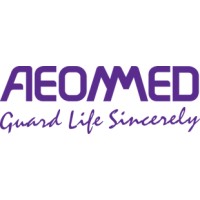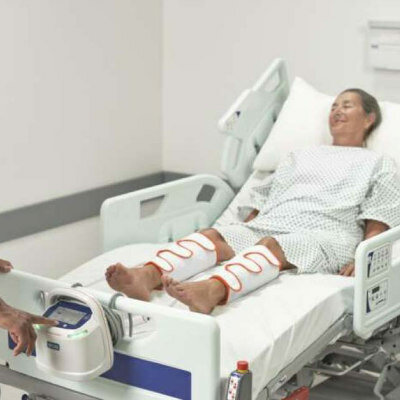Ingestible Marker Reliably Tracks Ingestion Events
|
By HospiMedica International staff writers Posted on 24 Dec 2019 |

Image: The ID-Cap ingestible event marker gelatin capsule and ID-Tag (Photo courtesy of etectRx)
A novel ingestible event marker helps clinicians overcome the challenges of patient non-adherence to medication regimens.
The etectRx (Gainesville, FL, USA) ID-Cap system is comprised of a gelatin capsule (the ID-Capsule) which contains the ID-Tag, a sensor that emits a low-power digital signal from inside the patient to monitor real-time, dose-level ingestion event verification. After it is ingested and activated by the patient's stomach fluid, it transmits signals to the wearable ID-Cap reader, which verifies the signal as a valid ingestion event and forwards the data to a secure, smartphone-based mobile application and to the healthcare provider via Dashboard, a secure web-based portal.
The ID-Cap System is intended to log, track, and trend intake times in order to enable unattended data collection of medication adherence for a range of clinical applications. It may be used when quantifiable analysis of ingestion events is needed, including events signaled by the co-ingestion with the ID-Capsule. Eventually, after the ID-Cap capsule dissolves, the ultra-thin, flexible ID-Tag sensor is eliminated via the gastrointestinal (GI) tract.
“The technology could enable doctors to better know if their patients are compliant with a therapy regimen and tailor their treatment practices, based on real-world use data,” said Harry Travis, CEO of etectRx. “A patient swallows their pill, they have their reader on, and within a few minutes of swallowing their pill, they get a notification on their cell phone that says, ‘Thank you for taking your medicine’.”
Estimates by the World Health Organization (WHO, Geneva, Switzerland) indicate that only about 50% of patients in developed countries follow treatment recommendations. Low rates of adherence for asthma, diabetes, and hypertension are thought to contribute substantially to the human and economic burden of those conditions. Major barriers to compliance include the complexity of modern medication regimens, poor "health literacy" and lack of comprehension of treatment benefits, undiscussed side effects, the cost of prescription medicine, and poor communication or lack of trust between patient and health-care provider.
Related Links:
etectRx
World Health Organization
The etectRx (Gainesville, FL, USA) ID-Cap system is comprised of a gelatin capsule (the ID-Capsule) which contains the ID-Tag, a sensor that emits a low-power digital signal from inside the patient to monitor real-time, dose-level ingestion event verification. After it is ingested and activated by the patient's stomach fluid, it transmits signals to the wearable ID-Cap reader, which verifies the signal as a valid ingestion event and forwards the data to a secure, smartphone-based mobile application and to the healthcare provider via Dashboard, a secure web-based portal.
The ID-Cap System is intended to log, track, and trend intake times in order to enable unattended data collection of medication adherence for a range of clinical applications. It may be used when quantifiable analysis of ingestion events is needed, including events signaled by the co-ingestion with the ID-Capsule. Eventually, after the ID-Cap capsule dissolves, the ultra-thin, flexible ID-Tag sensor is eliminated via the gastrointestinal (GI) tract.
“The technology could enable doctors to better know if their patients are compliant with a therapy regimen and tailor their treatment practices, based on real-world use data,” said Harry Travis, CEO of etectRx. “A patient swallows their pill, they have their reader on, and within a few minutes of swallowing their pill, they get a notification on their cell phone that says, ‘Thank you for taking your medicine’.”
Estimates by the World Health Organization (WHO, Geneva, Switzerland) indicate that only about 50% of patients in developed countries follow treatment recommendations. Low rates of adherence for asthma, diabetes, and hypertension are thought to contribute substantially to the human and economic burden of those conditions. Major barriers to compliance include the complexity of modern medication regimens, poor "health literacy" and lack of comprehension of treatment benefits, undiscussed side effects, the cost of prescription medicine, and poor communication or lack of trust between patient and health-care provider.
Related Links:
etectRx
World Health Organization
Latest Patient Care News
- Revolutionary Automatic IV-Line Flushing Device to Enhance Infusion Care
- VR Training Tool Combats Contamination of Portable Medical Equipment
- Portable Biosensor Platform to Reduce Hospital-Acquired Infections
- First-Of-Its-Kind Portable Germicidal Light Technology Disinfects High-Touch Clinical Surfaces in Seconds
- Surgical Capacity Optimization Solution Helps Hospitals Boost OR Utilization

- Game-Changing Innovation in Surgical Instrument Sterilization Significantly Improves OR Throughput
- Next Gen ICU Bed to Help Address Complex Critical Care Needs
- Groundbreaking AI-Powered UV-C Disinfection Technology Redefines Infection Control Landscape
- Clean Hospitals Can Reduce Antibiotic Resistance, Save Lives
- Smart Hospital Beds Improve Accuracy of Medical Diagnosis
- New Fast Endoscope Drying System Improves Productivity and Traceability
- World’s First Automated Endoscope Cleaner Fights Antimicrobial Resistance
- Portable High-Capacity Digital Stretcher Scales Provide Precision Weighing for Patients in ER
- Portable Clinical Scale with Remote Indicator Allows for Flexible Patient Weighing Use
- Innovative and Highly Customizable Medical Carts Offer Unlimited Configuration Possibilities
- Biomolecular Wound Healing Film Adheres to Sensitive Tissue and Releases Active Ingredients
Channels
Critical Care
view channel
CPR Guidelines Updated for Pediatric and Neonatal Emergency Care and Resuscitation
Cardiac arrest in infants and children remains a leading cause of pediatric emergencies, with more than 7,000 out-of-hospital and 20,000 in-hospital cardiac arrests occurring annually in the United States.... Read more
Ingestible Capsule Monitors Intestinal Inflammation
Acute mesenteric ischemia—a life-threatening condition caused by blocked blood flow to the intestines—remains difficult to diagnose early because its symptoms often mimic common digestive problems.... Read more
Wireless Implantable Sensor Enables Continuous Endoleak Monitoring
Endovascular aneurysm repair (EVAR) is a life-saving, minimally invasive treatment for abdominal aortic aneurysms—balloon-like bulges in the aorta that can rupture with fatal consequences.... Read more
Wearable Patch for Early Skin Cancer Detection to Reduce Unnecessary Biopsies
Skin cancer remains one of the most dangerous and common cancers worldwide, with early detection crucial for improving survival rates. Traditional diagnostic methods—visual inspections, imaging, and biopsies—can... Read moreSurgical Techniques
view channel
Robotic Assistant Delivers Ultra-Precision Injections with Rapid Setup Times
Age-related macular degeneration (AMD) is a leading cause of blindness worldwide, affecting nearly 200 million people, a figure expected to rise to 280 million by 2040. Current treatment involves doctors... Read more
Minimally Invasive Endoscopic Surgery Improves Severe Stroke Outcomes
Intracerebral hemorrhage, a type of stroke caused by bleeding deep within the brain, remains one of the most challenging neurological emergencies to treat. Accounting for about 15% of all strokes, it carries... Read moreHealth IT
view channel
Printable Molecule-Selective Nanoparticles Enable Mass Production of Wearable Biosensors
The future of medicine is likely to focus on the personalization of healthcare—understanding exactly what an individual requires and delivering the appropriate combination of nutrients, metabolites, and... Read moreBusiness
view channel
Philips and Masimo Partner to Advance Patient Monitoring Measurement Technologies
Royal Philips (Amsterdam, Netherlands) and Masimo (Irvine, California, USA) have renewed their multi-year strategic collaboration, combining Philips’ expertise in patient monitoring with Masimo’s noninvasive... Read more
B. Braun Acquires Digital Microsurgery Company True Digital Surgery
The high-end microsurgery market in neurosurgery, spine, and ENT is undergoing a significant transformation. Traditional analog microscopes are giving way to digital exoscopes, which provide improved visualization,... Read more
CMEF 2025 to Promote Holistic and High-Quality Development of Medical and Health Industry
The 92nd China International Medical Equipment Fair (CMEF 2025) Autumn Exhibition is scheduled to be held from September 26 to 29 at the China Import and Export Fair Complex (Canton Fair Complex) in Guangzhou.... Read more














